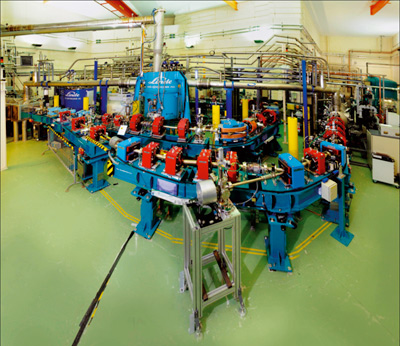
Image credit: STFC.
Physicists working on an R&D prototype for the next generation of accelerator-based light sources – Accelerators and Lasers in Combined Experiments (ALICE) at the Daresbury Laboratory in the UK – are celebrating after successfully colliding electrons and a powerful laser beam to produce short-pulsed X-rays. This is the first time this has been done in the UK and the first time that the concept of using an accelerator and laser source together has been demonstrated on ALICE.
The Compton Back Scattering project saw a team of scientists from the Cockcroft Institute, the University of Manchester, the Max Born Institute and the Science and Technology Facilities Council (STFC) accelerate bunches of electrons and then collide them head-on with a high-energy, short-pulse multi-terawatt laser photon beam. The technique converts the optical laser light to X-rays, as the electrons transfer energy to the photons.
ALICE is the first accelerator in Europe to operate using energy recovery, where the energy used to create its high-energy beam is captured and reused after each circuit of the accelerator for further acceleration of fresh particles. The recent success comes just one year after the facility first achieved energy recovery.







